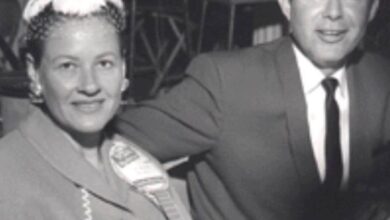One Can Only Wonder How Beethoven Would Have Reacted to This Amazing Performance.
It’s often said that everything is larger in Texas. However, reconsider that idea. Do you believe the Rockin’ 1000 is a huge music performance group? Think again. Annually since 1983, a choir of 10,000 singers has assembled each December in Japan to perform the choral finale of Beethoven’s Ninth Symphony. Combine this with the orchestra members, and you have a monumental performance.
The video below was captured in December 2011. It is led by Yutaka Sado, who has served as the General Director and conductor of the choir since 1999. Yutaka Sado, a Japanese conductor trained by Seiji Ozawa and Leonard Bernstein, was appointed Music Director of Austria’s oldest orchestra, the Tonkünstler Orchestra (first performance in 1907), in 2015.
Jonathan Lauzon succinctly remarks, “Composed by a German legend, sung by a Japanese multitude, gave chills to a Canadian nobody.” GoodVibes1997 states, “As a German, I’m impressed by the perfect pronunciation, the orchestra & the sheer number of musical talent.” The excellence of the singing is even more impressive considering that most singers are amateurs who complement professional soloists and a chamber choir. The demand to participate exceeds the available spots, making selection a privilege.
In Japan, Beethoven’s Ninth has become linked with the Christmas season. In shopping malls, community centers, and concert halls, there are hundreds of performances of the Ninth. Many feature singalongs to the “Ode to Joy,” the choral segment of the symphony’s fourth movement, symbolizing peace, hope, and joy. The text of the choral section is taken from an 1785 poem by Friedrich Schiller. Below is a heart-warming mini documentary on the annual Ode to Joy performance with 10,000 singers.
In the documentary, conductor Yutaka Sado insightfully observes, “Having 10,000 singers is incredible, but if they’re not engaged, it would be disheartening. I need to ensure they feel as if they’re not just one of 10,000; that each person has a leading role. That has been my greatest challenge since the first year and remains so today.”
The tale of the inaugural performance of Beethoven’s Ninth in Japan has become legendary. This event took place during the final phases of World War One. Around 1,000 German prisoners of war were held at Bando Camp. The camp was managed humanely, fostering sports and cultural interactions between the prisoners, Japanese guards, and local residents. A German prisoner named Paul Engel was permitted to teach music within the camp and twice a week was allowed to conduct lessons for interested Japanese individuals outside the camp.
It seems the camp developed 2 orchestras with 45 members each, 2 brass bands, and 2 choirs each consisting of sixty members. Over 80 prisoners dedicated months to perfecting Beethoven’s Ninth, which was performed in Barrack One of Bando Camp on June 1, 2018, marking the first performance in Japan.
The tradition of the 10,000-strong Daiku (literally meaning nine, referring to Beethoven’s 9th) continued through the pandemic. In 2020, marking the 250th anniversary of Beethoven’s birth, the event was held virtually for the first time. Singers worldwide submitted videos, resulting in 11,961 singing videos accompanying the live orchestra. In 2021, the event was conducted as a hybrid of live and virtual performances. Take a look:
Regarding the Japanese affection for the choral segment of Ode To Joy, Toshiaki Kamei, the director of the All-Japan Association of Daiku Choral Societies, states, “Nowadays, we observe many conflicts between different religions or different ethnic groups happening around the world. We believe singing Daiku together with people from various cultural backgrounds helps us learn to accept diversity and promote world peace.



